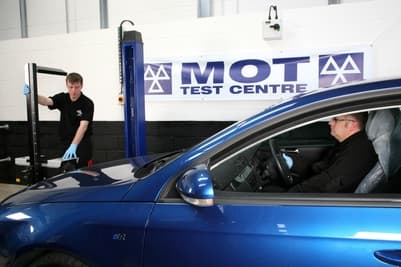Common MOT failures and how to prevent them
In the UK cars aged 3 years and over are legally required to have an annual MOT test to assess whether the car is roadworthy. The DVSA (driver and vehicle standards agency) are responsible for setting the checks that are carried out and the standards that must be met in order for a car to pass its MOT.

Taking the car for an MOT test can be worrying, not knowing what it could fail on and ultimately what it’s going to cost!
It is important to understand that whilst an MOT will check the car to ensure it is safe to be in the road, the engine, clutch and gearbox will not be checked as part of the assessment.
What checks are done on an MOT?
During an MOT test, your car will go through a series of checks to ensure the car is safe to be on the road. These checks consist of:
- Under the bonnet - battery and electrical wiring
- Internal - seat belts and seats, steering wheel and steering column, the mirrors, horn and speedometer, the doors as well as the lights and switches to ensure they are functioning correctly.
- External - indicators, lamps and number plates. The bodywork will be checked as well as the tyres and wheels. The windows, windscreens and wipers are checked too as well as the mirrors, doors and fuel cap. If one is fitters, the tow bar will be looked at too.
- Underneath- steering, suspension and shock absorbers will be inspected along with the brakes, wheel bearings, exhaust and fuel system. The general condition of the vehicle will also be checked.
See the full list of MOT checks carried out during an inspection.
What are the most common MOT failures?
There are several areas tested during a routine MOT which can be remedied by you before the car goes for its test. Checking these areas and rectifying where necessary could save you money, so what are they?
Bulbs
Before setting off to take your car for its MOT have a quick check if the bulbs in and around your car. You should be checking the headlights, side lights, rear lights, brake lights, fog lights, indicators, rear reflectors and the licence plate lights. If any bulbs are not illuminated they can be easily replaced.
Related: How to change a car headlight bulb in 4 simple steps
Tyres
The legal minimum tread depth of a tyre tread is 1.6mm. This is something you can be checking throughout the year and replacing your tyres when the treads start to get low. Worn tyres are illegal as they are considered very dangerous, they are after all the only part of your car that is in contact with the road. Worn treads lead to increased stopping distances; in other words, a car with worn treads will take longer to stop than a car with a good amount of tread remaining. There are consequences for grip in various weather conditions and in increased risk of punctures and blowouts.
Suspension
Be aware on clunking noises coming from your car, this usually indicates an issue with the suspension system. If you suspect that there is a problem, take your car to be checked over to identify any issues.
Brakes
If you notice your car pulls to the side when braking or the brake pedal feels spongy it is advised that this checked by a professional as soon as possible. These symptoms usually indicate worn brake pads.
Here at National we have a number of Approved MOT testing stations throughout the UK with highly qualified MOT testing technicians. You can check when your MOT is due on our MOT Due date checker page. Additionally, we can offer advice on how to book an MOT and even send you an annual reminder if you sign up to our MOT reminder service.
For a thorough mechanical check why not book an MOT and a service at the same time. Our service and MOT packages include an Interim Service and MOT or a Full Service and MOT.
Did you enjoy this blog post? |1 people found this review helpful



 Sign up for SPECIAL OFFERS
Sign up for SPECIAL OFFERS
